Chinese anti-tank artillery during the Cold War
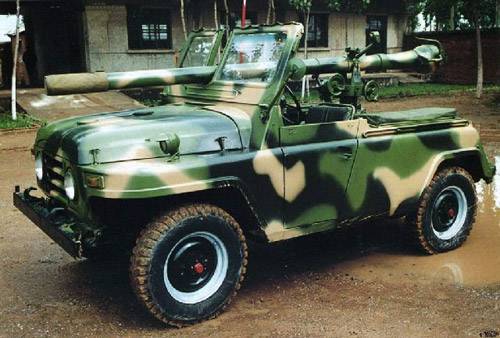
In the second half of the 1950s, the Chinese military conducted an audit of anti-tank artillery. All obsolete American and Japanese 37 - 47 mm guns were retired. Soviet 45mm, German 50mm, British and American 57mm guns were deposited and used for training purposes. In anti-tank artillery divisions, 57-85-mm Soviet-style guns were used, and in battalion and regimental echelons, 75 and 105-mm recoilless guns.
Chinese 57 mm anti-tank guns
As already mentioned in the previous part of the cycle, dedicated to the Chinese anti-tank artillery, during the war in Korea, the PLA received 57-mm ZiS-2 anti-tank guns from the USSR. These guns had good service and operational characteristics and high armor penetration.
After the end of the Korean War, the Soviet Union handed over technical documentation and helped to establish its own production of 57-mm anti-tank guns. The Chinese clone ZiS-2, which entered service in 1955, was designated Type 55. Until 1965, the Chinese industry produced about 1000 Type 57 55mm anti-tank guns, which served until the early 1990s.
In the late 1950s, a number of LVT (A) (4) amphibious assault support vehicles in the PRC were rearmed with 57-mm Type 55 cannons. Initially, these American-made vehicles, recaptured from the Kuomintang, were armed with a 75-mm M2 howitzer. In addition to the 57 mm gun, the vehicle had a rifle caliber machine gun.
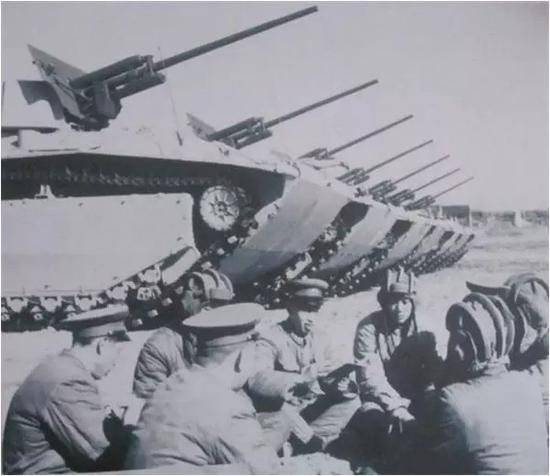
Protected by bulletproof armor, a floating lightly armored vehicle weighing about 18,5 tons on land accelerated to 40 km / h. Floating speed - up to 10 km / h. Due to the low specific pressure on the ground, the floating self-propelled gun easily went to the sandy shore, could move through loose sand, mud, swamp. Anti-tank self-propelled guns, created on the basis of captured LVT (A) (4), were in service with the PLA until the mid-1970s.
Chinese 85 mm anti-tank guns
To strengthen its anti-tank artillery, China received several dozen 1950-mm D-85 anti-tank guns in the mid-44s. Soon, with Soviet support, the PRC launched the licensed production of 85-mm guns. The Chinese version of the D-44 is known as the Type 56.
In terms of its characteristics, the Chinese 85-mm gun did not differ from the Soviet prototype. The mass of the gun in the combat position was 1725 kg. Effective rate of fire 15 rds / min. An armor-piercing projectile weighing 9,2 kg had an initial speed of 800 m / s and at a distance of 1000 m along the normal could penetrate 100-mm armor. A sub-caliber projectile weighing 5,35 kg left the barrel with an initial speed of 1020 m / s and at a distance of 500 m, when hit at a right angle, pierced 140-mm armor. A cumulative projectile, regardless of the normal range, penetrated 210-mm armor.
In the first half of the 1960s, the D-44 guns that were in the Soviet Army were transferred to the divisional artillery. This was due to the insufficient power of the 76-mm ZiS-3, as a divisional weapon, and the increased protection of the western tanks.
The D-44 anti-tank gun perfectly matched the realities of the end of World War II. However, a few years after the adoption of the D-44 into service, it became clear that this gun could no longer confidently penetrate the frontal armor of post-war medium and heavy tanks at actual combat distances. In this regard, under the leadership of the chief designer F.F.
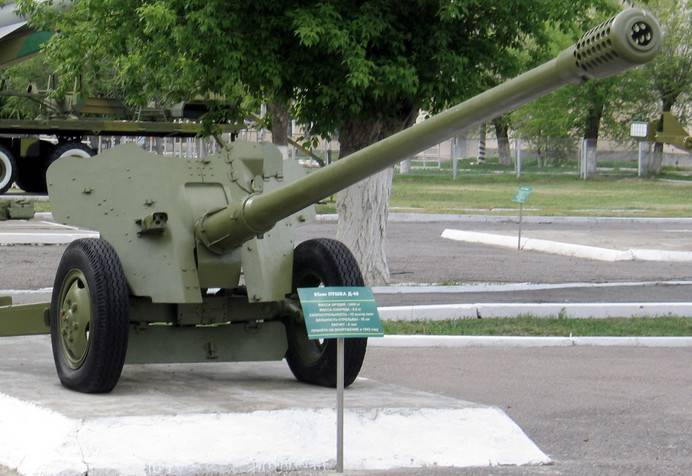
The mass of the gun in the firing position is 2350 kg. New unitary shots were developed especially for this gun. A new armor-piercing projectile at a distance of 1000 m pierced armor with a thickness of 150 mm at an angle of 60 °. A sub-caliber projectile at a distance of 1000 m pierced homogeneous armor 180 mm thick at an angle of 60 °. The maximum firing range of a high-explosive fragmentation projectile weighing 9,66 kg is 19 km. Rate of fire - up to 15 rounds / min.
For firing from the D-48, an "exclusive" ammunition was used, which was not suitable for other 85-mm guns. The use of shots from the D-44, KS-1, 85-mm tank and self-propelled guns was prohibited, which significantly narrowed the scope of the gun.
Shortly before the breakdown of military-technical cooperation between the countries, the Soviet Union handed over to the PRC a license to manufacture the D-48. In China, this gun was accepted into service under the designation Type 60.
But, in connection with the "cultural revolution" that began in the PRC, few such guns were released. Until the mid-1980s, the main means of anti-tank defense of the PLA were 85-mm Type 56 and 57-mm Type 55 guns, as well as 75-105-mm recoilless guns.
Chinese 75-105-mm recoilless guns
Created in 1952 on the basis of the American 75-mm recoilless gun, the Chinese Type 52 recoilless recoil was significantly inferior to the prototype in terms of its main characteristics. Due to the fact that very little high-quality steel was smelted in the PRC in the early 1950s, the Type 52 barrel was much thicker than that of the M20, which led to an increase in the mass of the Chinese gun.
In addition, due to imperfect ammunition, the Chinese 75-mm recoilless gun had a lower effective firing range and worse armor penetration. Nevertheless, the 75-mm recoilless system was actively used by Chinese people's volunteers at the final stage of the Korean War. It is stated that with the help of Type 52 recoilless guns, more than 60 tanks and armored vehicles were destroyed and incapacitated.
In 1956, the PLA adopted the Type 75 56-mm recoilless gun. It differed from the Type 52 in the bolt design, sights and a new machine with small wheels.
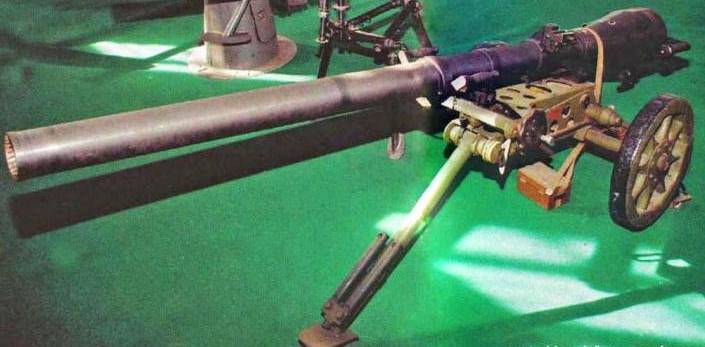
A new 75-mm cumulative grenade with normal armor penetration up to 140 mm was also adopted. Due to the fact that the cumulative grenade of increased power became heavier, the effective firing range against tanks did not exceed 400 m.A light cumulative grenade with armor penetration up to 100 mm could hit moving point targets at a distance of up to 500 m.
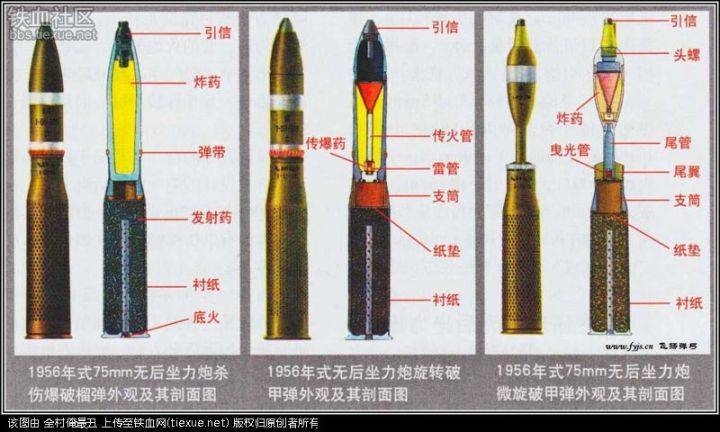
The gun could conduct aimed fire with fragmentation projectiles at stationary targets at a range of up to 2000 m. The maximum firing range was up to 5500 m. The Type 56, which weighed more than 85 kg in a combat position, served a crew of four. Combat rate of fire - up to 5 rds / min.
In the early 1960s, a modernized Type 56-I recoilless gun with a lightweight collapsible barrel and a machine without a wheel drive entered service. The weight of the gun in the firing position was reduced by 18 kg. In 1967, a new light alloy tripod lathe was developed for the Type 56-II, thereby reducing the weight of the gun by another 6 kg.
Due to the higher armor penetration and better efficiency of fragmentation shells, by the mid-1960s, the modernized Type 56-I and Type 56-II completely supplanted 57-mm recoilless guns in the PLA combat units.
In the mid-1960s, to increase the firepower of the Chinese patrol ships of the project 062 and the artillery ships of the project 0111, they were armed with paired 75-mm recoilless guns.
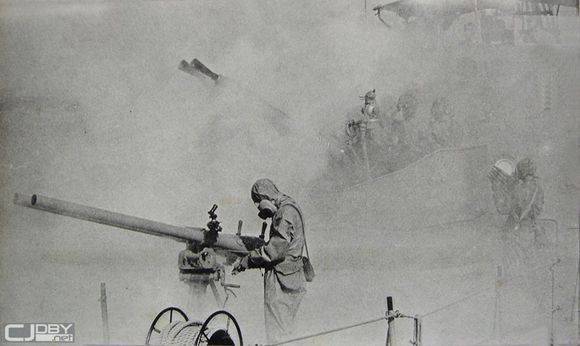
However, due to the very small, by sea standards, effective firing range and low rate of fire, recoilless guns on the decks of Chinese warships did not take root.
Taking into account the fact that the cost of a 75-mm Type 56 recoilless gun in the mid-1960s did not exceed $ 200, despite a number of shortcomings, it was actively exported to African and Asian countries. Chinese 75-mm recoilless wheels were used during the hostilities in Southeast Asia, and also participated in many local wars. In March 1969, Type 56 recoilless guns took part in the border armed conflict in the area of Damansky Island.
According to official Chinese sources, two Soviet armored personnel carriers BTR-75 were hit by fire from a 60-mm recoilless gun on Zhenbao Island (the Chinese name for Damansky Island). During the battle, the recoilless gunner Yang Liin, sacrificing himself, knocked out a Soviet T-62 medium tank.
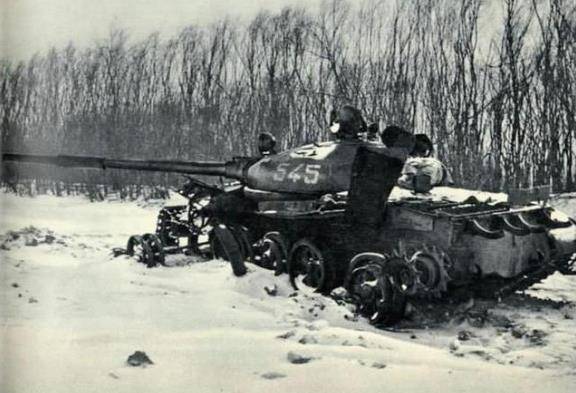
However, the photographs of the damaged tank show that the undercarriage is damaged, which is typical for detonation on anti-tank mines.
After dark, from the tank, which remained in the location of the Chinese troops, the PLA servicemen managed to dismantle the night vision devices and the weapon stabilizer, which were secret at that time. To prevent the T-62 from getting to the enemy, the ice around it was broken by the fire of 120-mm mortars, and the tank sank.
Subsequently, the Soviet T-62 was raised, evacuated and rebuilt. Chinese experts thoroughly studied the captured tank, revealing its advantages and disadvantages. Of particular interest were the smoothbore cannon with feathered shells, the fire control system, the weapon stabilizer, and night vision devices.
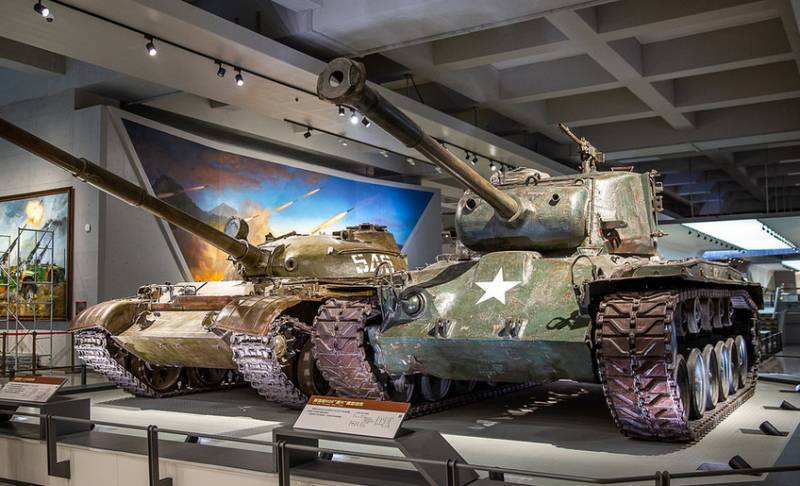
The captured T-62 was at the PLA tank test range until the mid-1980s, after which it was transferred to the Beijing Military Museum of the Chinese Revolution. Currently, the T-62 tank is installed next to the American M26 Pershing, captured on the Korean Peninsula, at the entrance to the armored vehicles hall of the Military Museum of the Chinese Revolution.
Shortly before the cooling of relations between the countries, the USSR transferred the license for the production of the 82-mm recoilless gun B-10, which had been in service with the Soviet army since 1954. In the Soviet army, the gun served as an anti-tank weapon for motorized rifle and parachute battalions.
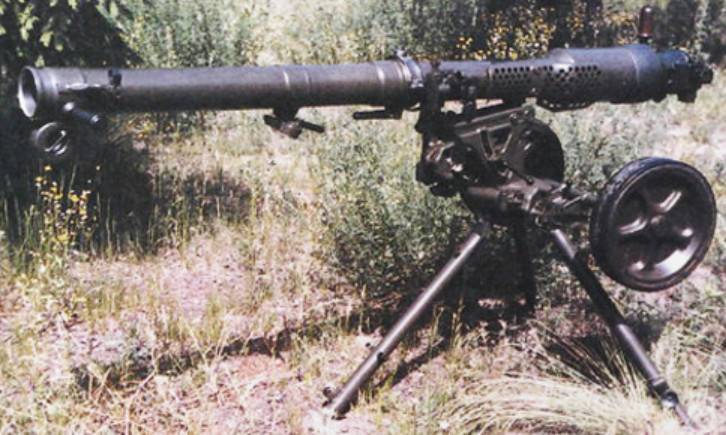
The B-10 recoilless gun was smooth-bore and fired with feathered cumulative and fragmentation shells. The mass of the wheeled gun is 85 kg. Maximum range - up to 4400 m Rate of fire - 6 rds / min. Effective firing range at armored targets - up to 400 m, armor penetration - up to 200 mm. The gun ammunition included cumulative and caseless-loaded fragmentation shots. The mass of the fragmentation and cumulative projectiles is 3,89 kg, the muzzle velocity is 320 m / s.
The B-10 gun significantly surpassed the 75-mm recoillessness available in the PLA, and in 1965 it was put into service in the PRC under the designation Type 65.
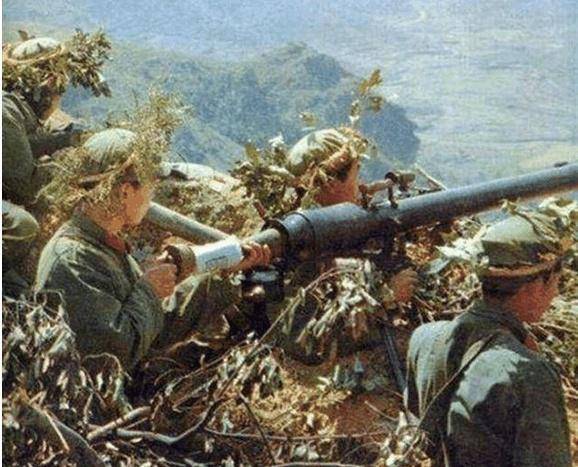
In 1978, the 82-mm Type 78 gun, created on the basis of the Type 65, entered service. The weight of the new gun was reduced to 35 kg, which made it possible, in case of urgent need, to fire a shot from the shoulder. In addition, changes were made to the bolt, which facilitated the loading process and increased the combat rate of fire. On the Type 65, the bolt opens downward, on the Type 78 - to the right.
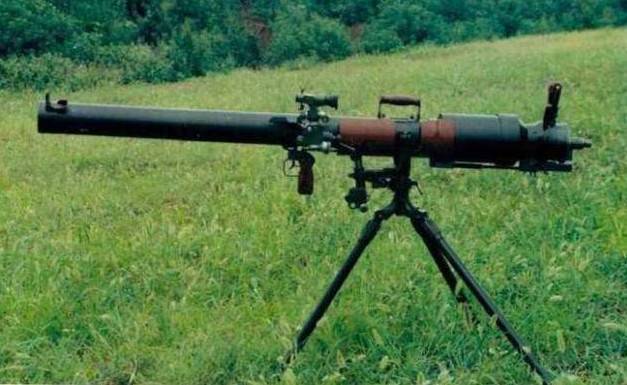
The muzzle velocity of an 82-mm cumulative grenade is 260 m / s, the effective firing range against tanks is 300 m. Armor penetration is 400 mm normal. The maximum firing range of a fragmentation grenade is 2000 m. Effective rate of fire is up to 7 rds / min. To combat manpower, projectiles equipped with 5 mm steel balls, with an effective engagement zone of up to 15 m, have been created.
The light 82-mm Type 78 recoilless recoillers were widely used in the PLA, they were used during the armed conflict with Vietnam and on the Sino-Indian border, supplied to the armed detachments of the Afghan opposition, African and Asian countries.
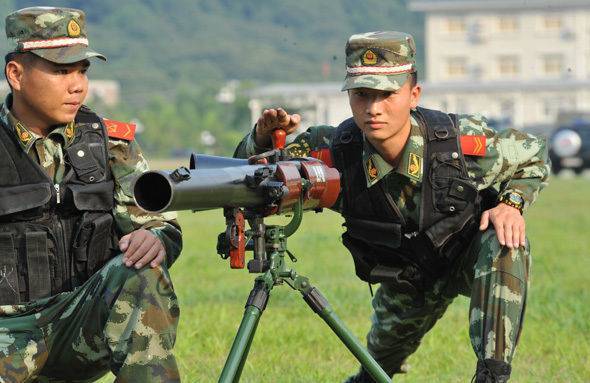
In the 1980s, upgraded versions of the Type 78-I and Type 78-II were created. The release of improved modifications continued until the second half of the 1990s. The ability to mount night sights appeared, the shutter was improved, and the ammunition load included shots of increased power. 82-mm recoilless guns are still in the PLA, but now it weapon is mainly seen as a means of fire support for infantry.
During the Vietnam War, Chinese intelligence showed great interest in samples of American equipment and weapons captured by the guerrillas and the regular army of North Vietnam during the hostilities.
Among the captured samples shipped to the PRC were the American 106-mm M40 recoilless guns. The development of this recoilless gun was carried out during the years of the Korean War, when the inability of the 75-mm recoilless gun to penetrate the frontal armor of Soviet heavy tanks became apparent. The M40 gun entered service in 1953, but it did not have time to take part in the hostilities on the Korean Peninsula.
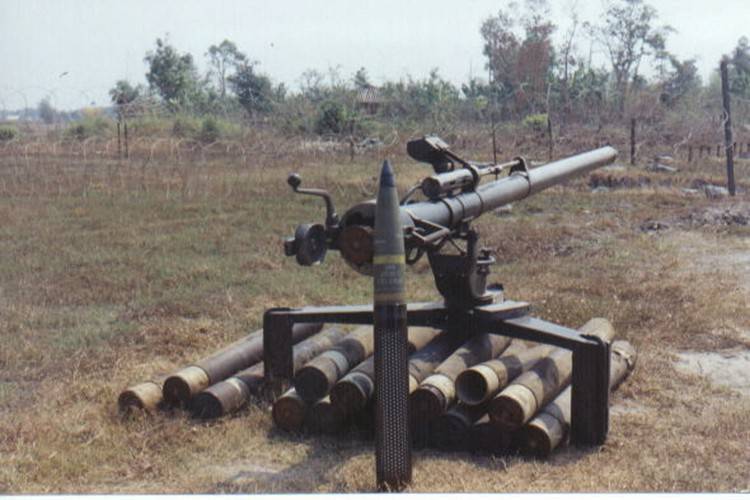
In addition to fighting armored vehicles, the 106-mm recoilless gun could fire from closed positions, for which there were standard sighting devices. When firing at visually observed targets, a sighting 12,7-mm automatic rifle with tracer bullets was used, which gives a bright flash and a cloud of smoke when it hits the target. The flight trajectory of sighting bullets at a distance of up to 900 m corresponded to the trajectory of a 106-mm cumulative projectile.
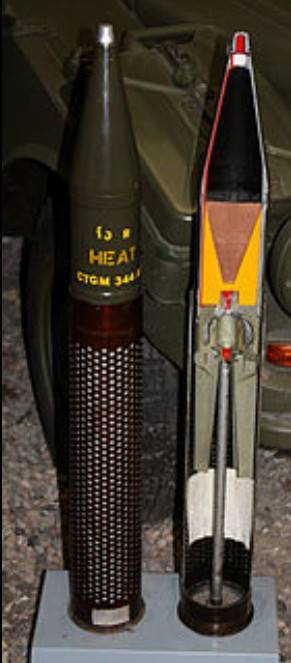
Taking into account the fact that the mass of the 106-mm recoilless gun was 209 kg, it was usually installed on various vehicles. Most often these were light off-road vehicles.
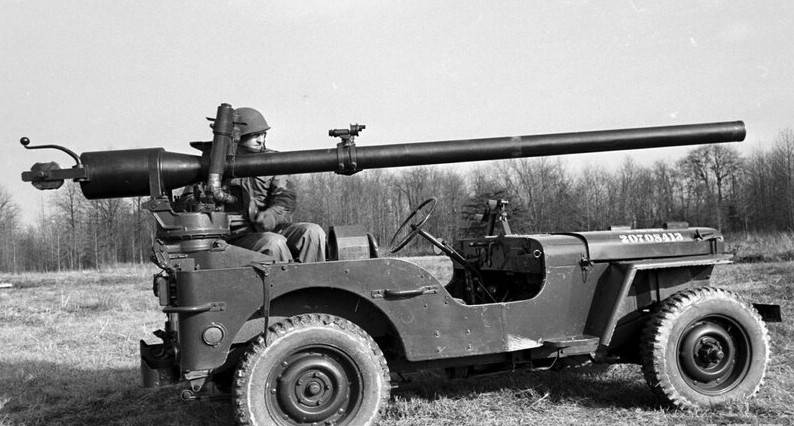
On the basis of the American 106-mm gun in 1967, the PRC created a 105-mm gun. The debugging was delayed, and the Chinese recoilless system was adopted by the PLA under the designation Type 75 in 1975.
In general, the Type 75 gun repeated the design of the M40, but there were a number of differences. On the Chinese recoilless recoil, there was no large-caliber rifle and simplified sights were used. The mass of the gun was 213 kg.
Like other recoilless guns copied from American designs, the Type 75 used perforated-case rounds. Part of the gases passed through the holes and were thrown back through special nozzles in the breech of the barrel, thus creating a reactive moment that dampens the recoil force.
For firing, shots were used with a cumulative and high-explosive fragmentation grenade. The mass of a unitary shot with a fragmentation grenade is 21,6 kg, with a cumulative one - 16,2 kg. The initial speed of a cumulative grenade is 503 m / s, a high-explosive fragmentation grenade - 320 m / s. The range of a direct shot with a cumulative projectile is 580 m. The maximum firing range of a high-explosive fragmentation projectile is 7400 m. A cumulative projectile, when it hits at an angle of 65 °, pierced 180 mm thick armor. Rate of fire - 5-6 rds / min.
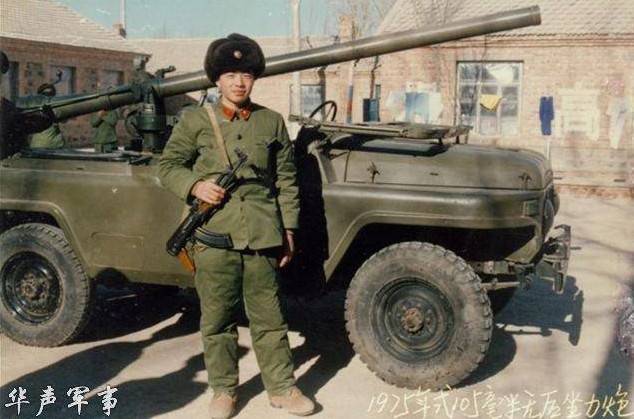
Most of the 105-mm recoilless guns produced in the PRC were installed on light army off-road vehicles. The calculation of the gun was 5 people. Each vehicle, armed with a recoilless gun, had a place to carry 8 unitary rounds in capping. In defense, the gun could be removed from the vehicle and fire from the ground.
Until the mid-1990s, six Type 105 75-mm recoilless guns were part of the anti-tank battery of the PLA regular infantry regiments stationed in the northwest of the PRC. Currently, they are almost completely replaced by anti-tank systems with guided missiles.
A number of guns installed on Beijing BJ2020S vehicles have been exported. It is reliably known that such machines were used in the civil war in Libya.
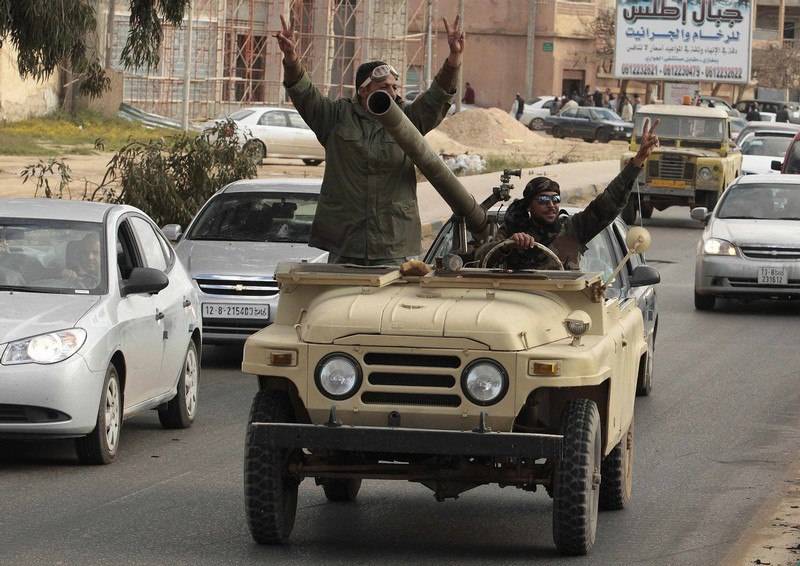
The 105mm guns mounted on the jeeps have survived in Chinese airmobile units. These light anti-tank self-propelled guns can be transported on the external sling of medium transport helicopters or inside the Shaanxi Y-8 military transport aircraft (copy of the An-12).
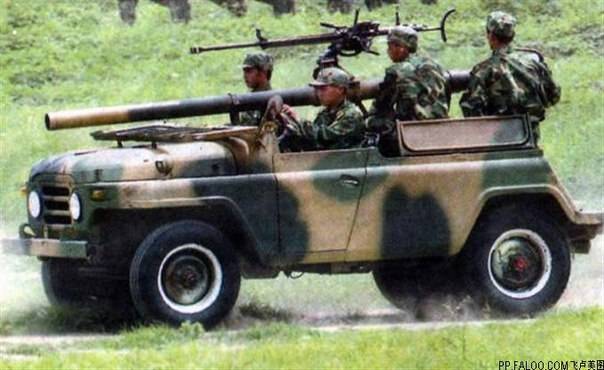
They are in the batteries of recoilless guns of the airborne division's artillery divisions. Each battery contains six Type 75. It is reported that the upgraded 105mm recoilless systems are equipped with computerized sights with a night channel and laser rangefinders. In addition to the recoilless gun, a large-caliber machine gun can be mounted on the BJ2020S vehicle.
Although 105-mm recoilless systems are already ineffective against modern tanks, the Norinco corporation offered them for export until recently. It is believed that such weapons can be useful to the rapid reaction forces and can be successfully used against light armored vehicles and manpower.
- Linnik Sergey
- Chinese anti-tank artillery in the Sino-Japanese and Civil Wars
Chinese anti-tank artillery in the Korean War
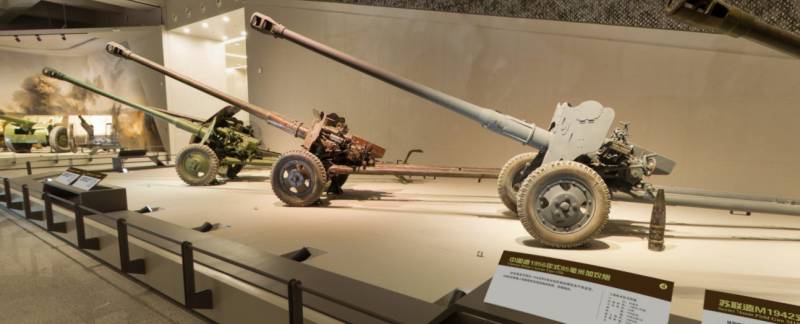
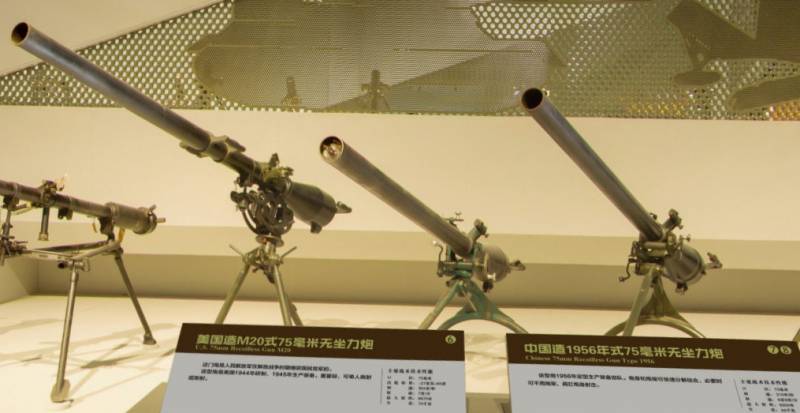
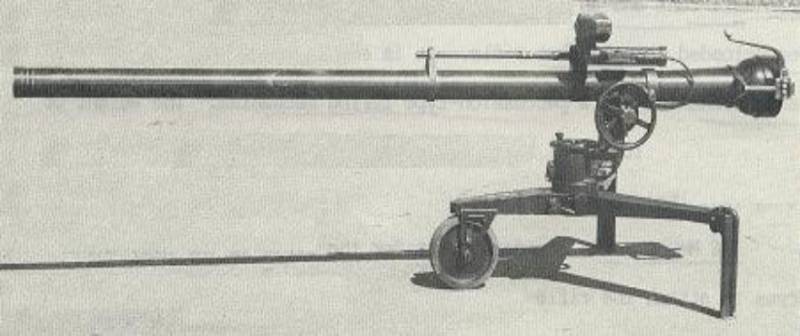
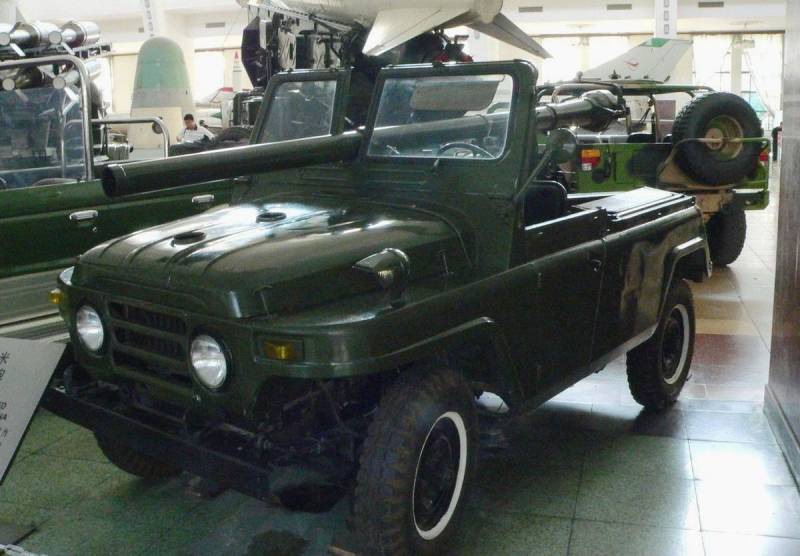
Information